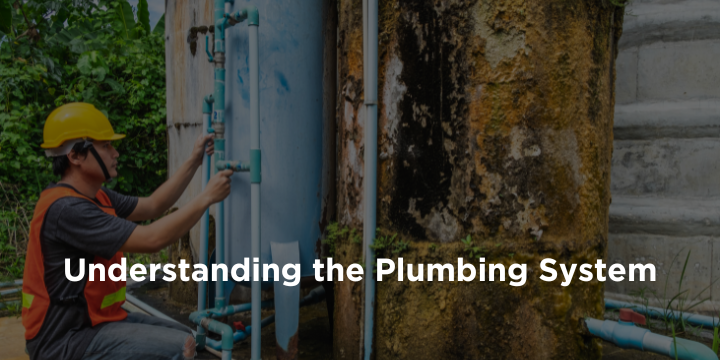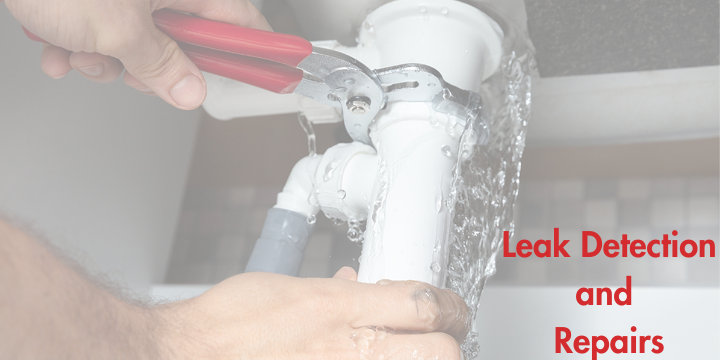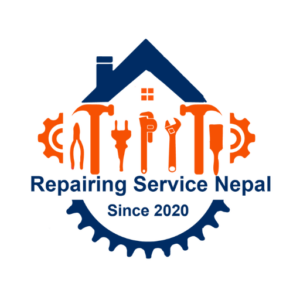Plumbing is an essential aspect of any residential, commercial, or industrial building, ensuring a steady water supply and efficient waste management. It plays a fundamental role in modern infrastructure, contributing to health, sanitation, and overall comfort in everyday life. Without a well-functioning system, access to clean water would be compromised, and improper waste disposal could lead to serious structural and environmental issues.
Whether you’re a homeowner, a DIY enthusiast, or someone looking to grasp the basics, understanding how water systems function can be incredibly beneficial. Having knowledge of key components, maintenance practices, and troubleshooting techniques allows you to handle minor repairs, reduce water waste, and avoid costly damages. Additionally, a well-maintained setup ensures that fixtures operate efficiently, improving water pressure, drainage, and overall system performance.
The design and maintenance of a water distribution and drainage system rely on fundamental principles such as gravity, pressure, and water level control. These factors influence everything from how water flows through pipes to how waste is effectively transported out of a building. By understanding these concepts, you can identify common issues, make informed decisions about upgrades, and optimize water usage to increase efficiency.
This guide will provide an in-depth introduction to water systems, covering essential components, materials, and best practices. From learning about basic fittings and pipe layouts to exploring modern materials and installation techniques, gaining this knowledge will help ensure your system remains functional, durable, and cost-effective for years to come.
Table of Contents
ToggleWhat is Plumbing?
Before diving into plumbing basics, it’s essential to understand what plumbing truly means and why it plays a crucial role in everyday life. Plumbing refers to the network of pipes, valves, fittings, drains, fixtures, and appliances that work together to manage the flow of water into and out of a building. This system is designed to supply clean, potable water for drinking, cooking, cleaning, and bathing while ensuring that wastewater is safely removed from the premises.
A properly designed plumbing system consists of two main subsystems:
- Freshwater Supply System – Responsible for delivering clean water at the right pressure to various fixtures and appliances.
- Wastewater Drainage System – Ensures the efficient removal of used water and waste without leaks or blockages.
These two subsystems must function seamlessly to maintain a healthy and hygienic environment in any home, commercial space, or industrial facility.
The Importance of Plumbing in Modern Life
Water systems are often taken for granted, yet they are among the most critical aspects of any building. Without proper maintenance, access to clean water would be compromised, and poor drainage could lead to sanitation issues, structural damage, and health hazards. Some key reasons why a well-functioning system is essential include:
- Health and Hygiene
- A well-maintained setup ensures the availability of clean water for drinking, cooking, and cleaning while safely disposing of wastewater to prevent contamination and disease.
- Comfort and Convenience
- Whether it’s a hot shower, a functioning toilet, or a clean kitchen sink, a reliable system contributes to everyday comfort and efficiency in any home or workplace.
- Water Conservation
- Modern materials and fixtures are designed to reduce water waste, helping to conserve resources and lower utility bills.
- Energy Efficiency
- An efficiently designed system ensures that water heaters, boilers, and appliances use resources effectively, reducing overall energy consumption.
- Structural Protection
- Proper drainage prevents leaks, mold growth, and foundation damage, which can compromise the integrity of a building over time.
The Evolution of Plumbing
The concept of water management systems dates back thousands of years. Ancient civilizations like the Egyptians, Romans, and Greeks developed basic infrastructure using clay, lead, and copper pipes to transport water and remove waste. Over time, advancements in engineering and materials have led to more durable, efficient, and environmentally friendly solutions.
Today, modern services go beyond just installing pipes. They now include water treatment, filtration, rainwater harvesting, and smart water management solutions, helping create more sustainable and efficient systems for both residential and commercial properties.
Whether in homes, offices, factories, or public buildings, a well-maintained system is crucial for maintaining hygiene, comfort, and efficiency. By understanding the fundamentals, homeowners and business owners can take proactive steps to prevent potential issues, optimize performance, and ensure that everything functions smoothly for years to come.
Understanding the Plumbing System
The plumbing system in any building is divided into two primary subsystems:
- Freshwater Supply System
- Wastewater Drainage System
Each of these subsystems functions differently, yet both are crucial to maintaining a smooth plumbing work in a house. Let’s explore each in detail.
Fresh Water In: The Supply System
The freshwater supply system is responsible for bringing clean, potable water into your building. This system is designed to operate under pressure, allowing water to move efficiently through pipes, turn corners, and reach multiple fixtures, including faucets, showers, and appliances.
Components of the Freshwater Supply System
To understand basic plumbing parts, let’s look at the key components that make up the supply system:
- Water Source: The origin of your water supply, such as a municipal pipeline or a private well.
- Main Shutoff Valve (Ball Valve): This is the primary valve that controls the water supply to the entire building. It is crucial during maintenance or plumbing emergencies.
- Pipes and Fittings: The materials used to transport water. These can be made of PVC, copper, PEX, or galvanized steel.
- Fixtures and Appliances: These include faucets, showers, washing machines, dishwashers, and toilets that use water.
- Water Heater: Heats the cold water before it is supplied to showers, sinks, and appliances.
Water Pressure and Flow
Water pressure is crucial for a functioning plumbing system. If the pressure is too low, appliances may not work efficiently, and if it’s too high, pipes can get damaged over time. Plumbing materials must be chosen carefully to withstand the pressure levels required.
Each fixture requires a specific amount of pressure to function correctly. If multiple fixtures are running simultaneously, the water flow should remain consistent. That’s why plumbing basics for beginners often emphasize the importance of pressure regulators and proper pipe sizing.
Hot Water Supply System
The hot water system is slightly different from the cold water supply system. Here’s how it works:
- Cold water enters the water heater through an inlet pipe.
- The water heater warms the water to the desired temperature.
- Heated water exits through an outlet pipe and is distributed to necessary fixtures, such as bathrooms and kitchens.
- A separate pipeline carries hot water to each fixture.
In large buildings, basics of plumbing engineering ensure that hot water reaches fixtures quickly, minimizing heat loss during transit.
Waste Water Out: The Drainage System
While the freshwater supply system relies on pressure, the wastewater system primarily depends on gravity to remove used water from the building. Proper drainage is essential to prevent blockages, leaks, and backflow issues.
Key Components of the Drainage System
Understanding the basic plumbing diagram of a drainage system helps visualize how wastewater flows out of a building. Here are the critical components:
- Drain Pipes: Carry wastewater from sinks, toilets, and appliances to the main sewer or septic system.
- Traps: Prevent sewer gases from entering the building by maintaining a small amount of water in the pipe.
- Vents: Allow air to enter the drainage system to facilitate smooth water flow.
- Cleanouts & Manholes: Provide access points for maintenance and unclogging blockages.
Preventing Clogs and Blockages
An essential part of plumbing basics is ensuring that waste and debris do not clog the drainage system. Here are some preventative measures:
- Use strainers to catch debris in sinks and showers.
- Avoid flushing anything other than toilet paper down the toilet.
- Regularly clean drains to prevent buildup.
- Install proper pipe slopes to facilitate smooth drainage.
Plumbing Materials: What You Need to Know
The durability and efficiency of a plumbing system depend on the plumbing materials used. Some common materials include:
- Copper: Highly durable, resistant to corrosion, and ideal for both hot and cold water lines.
- PVC (Polyvinyl Chloride): Lightweight, easy to install, and used mainly for drainage systems.
- PEX (Cross-linked Polyethylene): Flexible, resistant to freezing, and ideal for water supply lines.
- Galvanized Steel: Once popular but now less common due to corrosion issues.
Choosing the right plumbing materials is crucial for ensuring a long-lasting and efficient system.
Basics of Plumbing Engineering: The Technical Side
Plumbing engineering is a specialized field that focuses on designing, installing, and maintaining complex plumbing systems in buildings. Key aspects of plumbing engineering include:
- Water pressure calculations to ensure a steady supply.
- Pipe sizing based on water demand.
- Drainage slope design to prevent backups.
- Ventilation planning to allow free air movement in the system.
For larger buildings, an introduction to plumbing engineering is essential for designing efficient and sustainable water supply and drainage networks.
Plumbing Services: Why Professionals Matter
While understanding plumbing basics for beginners is beneficial for handling minor repairs and maintenance, certain tasks require the expertise of professional plumbing services. A well-functioning plumbing system is essential for maintaining a safe and comfortable living environment, and hiring a licensed plumber ensures that all installations and repairs are done correctly, preventing costly mistakes in the future.
When to Call Professional Plumbing Services
Although homeowners can manage some basic plumbing tasks like unclogging drains or fixing minor leaks, more complex issues should be left to trained professionals. Here are some critical situations where professional plumbing services are necessary:
1. Leak Detection and Repairs
Leaks can be difficult to detect, especially when they occur inside walls or underground pipes. Even a small leak can lead to structural damage, mold growth, and increased water bills. Professional plumbers use advanced tools like thermal imaging and leak detection equipment to identify hidden leaks and repair them efficiently.
2. Pipe Replacements and Upgrades
Old or damaged pipes can cause water contamination, poor water pressure, and frequent leaks. If your home has outdated plumbing materials like lead or galvanized steel pipes, a plumber can upgrade the system to safer and more efficient materials such as copper or PEX. Proper pipe replacement ensures durability, safety, and compliance with modern plumbing standards.
3. Sewer Line Maintenance and Repairs
A malfunctioning sewer system can result in slow drainage, foul odors, or even sewage backups into your home. Professional plumbers can inspect the sewer lines using CCTV drain cameras to detect blockages, root intrusions, or pipe collapses. Regular sewer maintenance prevents major plumbing emergencies and helps maintain a healthy sanitation system.
4. Installing New Fixtures and Appliances
Whether you’re upgrading your kitchen, remodeling a bathroom, or installing new plumbing appliances like water heaters, dishwashers, or water filtration systems, professional installation is crucial. Incorrect installations can lead to water leaks, inefficiencies, and even damage to the appliance itself. Plumbers ensure that all fixtures are properly connected, sealed, and compliant with building codes.
5. Water Heater Repair and Maintenance
Water heaters require regular maintenance to ensure efficient heating and longevity. A professional plumber can flush out sediment buildup, replace faulty components, and check for leaks or corrosion. Proper maintenance helps extend the lifespan of the heater and ensures consistent hot water supply.
6. Emergency Plumbing Services
Burst pipes, overflowing toilets, and major leaks require immediate attention. Professional emergency plumbing services are available 24/7 to handle such critical situations, preventing water damage and costly repairs.
Why Hiring a Professional is Worth It
Attempting DIY fixes on complex plumbing issues can sometimes do more harm than good. Here’s why hiring an expert for plumbing work in a house is always a smart choice contact with repair service:
✔ Safety & Compliance: Professionals follow local plumbing codes and safety regulations, reducing the risk of faulty installations, water damage, or gas leaks.
✔ Proper Tools & Equipment: Expert plumbers use specialized tools and technology for accurate diagnosis and efficient repairs.
✔ Long-Term Solutions: Instead of temporary fixes, professionals provide permanent solutions that improve the overall lifespan of your plumbing system.
✔ Saves Time & Money: While DIY attempts may seem cost-effective, improper repairs can lead to expensive future damages. Hiring a professional ensures the job is done right the first time.
Conclusion
Having a solid understanding of plumbing basics is essential for maintaining an efficient and functional water system. Whether you’re dealing with freshwater supply, wastewater drainage, or general maintenance, knowing how everything operates helps prevent unexpected breakdowns, costly repairs, and water wastage.
From learning about basic components to understanding how household systems function, this knowledge empowers homeowners, contractors, and DIY enthusiasts to make informed decisions. Simple practices like checking for leaks, maintaining proper water pressure, cleaning drains, and using high-quality materials can significantly extend the system’s lifespan and improve overall efficiency.
For those new to this field, this guide has provided a comprehensive introduction, covering essential parts, materials, and services that ensure smooth water supply and drainage. Whether you’re looking to fix minor issues, optimize water usage, or invest in long-term solutions, having the right knowledge is the first step.
If you ever face complex issues or major emergencies, seeking professional help is always a wise decision. Experts can ensure your system remains in top condition, preventing potential hazards and improving water efficiency.
By staying informed and proactive, you can protect your home, conserve water, and maintain a reliable system that meets your everyday needs.





